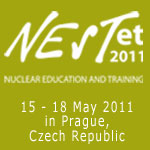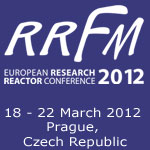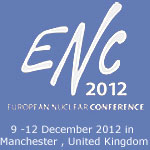

NUCNET NEWS
THE WORLD’S NUCLEAR NEWS AGENCY
12.04.2011 - No. 96 / News in Brief
Fukushima-Daiichi INES Rating Increased To Level 7
The accident at the Fukushima-Daiichi nuclear power plant in Japan has been provisionally increased from Level 5 to Level 7 – a “major threat” – on the International Atomic Energy Agency’s International Nuclear Event and Radiological Scale (INES).
Level 7 is the most serious level on INES and is used to describe an event comprised of “a major release of radioactive material with widespread health and environmental effects requiring implementation of planned and extended countermeasures”.
This is only the second Level 7 accident in the nuclear industry. The first was at Chernobyl in 1986.
In a report to the IAEA, Japan’s Nuclear and Industrial Safety Agency (NISA) said the accident had been re-evaluated based on data showing the total amount of radioactivity released to the environment from the plant since it was hit by an earthquake and tsunami on 11 March 2011.
The report said figures show the total amount of iodine-131 discharged is estimated at 130 petabequerels (PBq) and caesium-137 at 6.1 PBq.
NISA said it estimates that the amount of radioactive material released to the atmosphere is approximately 10 percent of the Chernobyl accident.
NISA had initially rated the accident at Fukushima-Daiichi as Level 5, which means “accident with wider consequences”.
The new provisional Level 7 rating considers the accidents that occurred at units 1, 2 and 3 as a single event on INES.
Previously, separate INES Level 5 ratings had been applied for units 1, 2 and 3.
The provisional INES Level 3 rating assigned for unit 4 still applies.
Source: NucNet
Editor: david.dalton@worldnuclear.org
11.04.2011 - No. 95 / News in Brief
Workers Finish Initial Discharge Of Low-Level Radioactive Water Into Sea
11 Apr (NucNet): Workers at the Fukushima-Daiichi nuclear power plant in Japan have finished discharging low-level radioactive water into the sea to make room in storage facilities for highly radioactive water.
Japan Nuclear and Industrial Safety Agency (NISA) spokesman Yasuhiro Sakuma told NucNet that the initial discharge of low-level radioactive water had finished. He said there might be other low-level radioactive water elsewhere in the plant.
Plant operator Tokyo Electric Power Company (Tepco) has been discharging the low-level radioactive water into the sea to make room in storage facilities for highly radioactive water from the unit 2 reactor complex, where radioactive water 100,000 times the normal level in an operating reactor has been found in the turbine building basement.
There is a risk that this radioactive water might continue to leak into cable trenches and pits outside the unit’s controlled zone and from there flow into the sea.
Contaminated water has also been found in the turbine hall basements of units 1 and 3, although its activity is lower than the water at unit 2.
The contaminated water needs to be moved from the turbine building basements and from a concrete tunnel and trenches to various storage facilities.
The amount of water is estimated at more than 60,000 tonnes, the International Atomic Energy Agency said.
The water has been hampering work to restore the reactors’ cooling systems.
Tepco is working to lay hoses between the turbine buildings and the storage facilities so the water can be removed. Holes have already been bored in the walls of the buildings, but work to install the hoses has yet to begin, the Japan Atomic Industrial Forum (JAIF) said.
In addition, waste disposal facilities need to be closely checked before the procedure can begin, NISA said.
NISA said facilities must be checked for cracks that might have been caused by the earthquake, and that this could take up to a week.
Source: NucNet
Editor: mathieu.carey@worldnuclear.org
‘No Significant Impact’ From New Quake, NISA Confirms
Unplanned Events & Incidents
7 Apr (NucNet): Japan’s Nuclear and Industrial Safety Agency (NISA) has said an earthquake that struck northern Japan today has not had any significant impact on the Fukushima-Daiichi nuclear power plant, although at the Onagawa plant it disabled two out of three external electricity supply lines.
NISA spokesman Masaomi Koyama told NucNet that according to the NISA inspector onsite at Onagawa only one external electricity supply line is operational.
All three units at Onagawa in Miyagi Prefecture – on the coast to the north of Fukushima – shut down automatically during the 11 March quake that struck the same region and are now in cold shutdown.
The plant is owned and operated by Tohoku Electric Power Company.
Mr Koyama said that at Fukushima-Daiichi there has been “no specific event”.
Initial details from the US Geological Survey said today’s quake was magnitude 7.1 and at a depth of 49 km. It occurred at 23:32 at its epicentre, near the coast of Honshu, or 16:42 central European time.
Earlier, nitrogen was being injected into the primary containment vessel (PCV) of unit 1 at Fukushima-Daiichi amid concerns that hydrogen that has accumulated there could cause an explosion.
Injecting nitrogen is intended to displace oxygen inside the PCV, thereby reducing the risk of explosion caused by the combustible combination of hydrogen and oxygen.
Source: NucNet
Editor: david.dalton@worldnuclear.org
|





